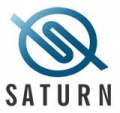In this page you can search all ARTES except ARTES 20 IAP, which can be found on Business Applications - Projects.
Please click on the + symbol to expand the Filter By ARTES Elements to narrow your search. If you are looking for a specific element select from the list provided and click on the Apply button to start the search and display the results.
Displaying 801 - 840 of 1736
CAN bus implementation on E3000
Status date:
Prime Contractor
Subcontractors
OMCU
Status date:
Prime Contractor
Subcontractors
300W Ku-Band Single FPM
Status date:
Prime Contractor
Subcontractors
K/Ka-Band CP OMT for Complete Band Suitable for Multibeam Applications
Status date:
Prime Contractor
Subcontractors
SATURN - Smart mAritime saTellite terminal for mUltimedia seRvices and conteNts

Status date:
Prime Contractor
Subcontractors
HeHPV (Helium High-Pressure Vessel)
Status date:
Prime Contractor
Subcontractors
Compact Ku-Band Channel Filters for Input Multiplexers
Status date:
Prime Contractor
Subcontractors
Mobile Terminal Antenna Operating at both KU Band and KA Band

Status date:
Prime Contractor
Subcontractors
CM Standard Evolution 1
Status date:
Prime Contractor
Subcontractors
High Performance C-/Ka-Band Coaxial Circulators

Status date:
Prime Contractor
Subcontractors
Ku-Band TT&C Transponder
Status date:
Prime Contractor
Subcontractors
Development of an EQM for a Ka-Band Preselect Filter
Status date:
Prime Contractor
Subcontractors
Rx2
Status date:
Prime Contractor
Subcontractors
Optopyrotechnics for Telecom Satellites
Status date:
Prime Contractor
Subcontractors
KuBB
Status date:
Prime Contractor
Subcontractors
SSS

Status date:
Prime Contractor
Subcontractors
UmiB Slice 3

Status date:
Prime Contractor
Subcontractors
OtIS
Status date:
Prime Contractor
Subcontractors
FOGBS
Status date:
Prime Contractor
Space-SCE : SINGLE CHANNEL EMULATOR

Status date:
Prime Contractor
Subcontractors
SPACEBUS G3 SLIPRING AND SENSORS
Status date:
Prime Contractor
Subcontractors
On-Board Spectrum Monitoring (OBSM)
Status date:
Prime Contractor
Subcontractors
Iris Service Evolution

Status date:
Prime Contractor
Subcontractors
- Airbus Defence and Space (France)
- Airtel ATN
- Alitalia
- AVINOR AS
- Boeing
- CGI-NL
- CGI IT UK Limited
- DLR
- ENAIRE
- ENAV
- Evolvsys
- Frequentis
- GMV
- GMV Romania
- Helios Technology
- Honeywell-CZ
- Honeywell
- Iguassu Software Systems
- Indra
- Indra-RO
- NATS
- Next
- Romatsa
- Sintef
- SITA Information Network Computing (INC) B.V
- Thales Alenia Space Italia
- Thales Alenia Space UK
- University of Salzburg, Institute of Computer Science
- WISER SRL
ANTARES
Status date:
Prime Contractor
Subcontractors
- Indra
- Thales Alenia Space - France
- Thales Avionics Ltd
- Honeywell
- Aedel Aerospace
- Airtel ATN
- Capgemini Norway
- Evolving Systems Consulting
- Frequentis
- Iguassu Software Systems
- IZT
- Next
- OHB-System AG
- Sintef
- GMV
- DLR
- Space Engineering S.p.A
- Thales Alenia Space España
- University of Salzburg, Institute of Computer Science
- THALES Land and Joint
- WISER SRL
- Antwerp Space N.V.
- SPACEBEL
- AETHIS
- ViaSat Antenna Systems SA
LNA-TEC
Status date:
Prime Contractor
Subcontractors
NG-MSS
Status date:
Prime Contractor
SatcomWeather
Status date:
Prime Contractor
HDGE
Status date:
Prime Contractor
Subcontractors
SYPRUS

Status date:
Prime Contractor
Subcontractors
Selectable Sub-Reflector Antenna
Status date:
Prime Contractor
Subcontractors
Ka-METROCAL

Status date:
Prime Contractor
Subcontractors
ESTARR
Status date:
Prime Contractor
Subcontractors
ASTROgyro
Status date:
Prime Contractor
Subcontractors
Tracking System for antennas with boom

Status date:
Prime Contractor
Subcontractors
RFMLI
Status date:
Prime Contractor
Subcontractors
HPLO
Status date:
Prime Contractor
Subcontractors
Evaluation of Supercapacitors and Impacts at System Level

Status date:
Prime Contractor
Subcontractors
MESH

Status date:
Prime Contractor
Subcontractors
SiGe VCO Block
Status date:



